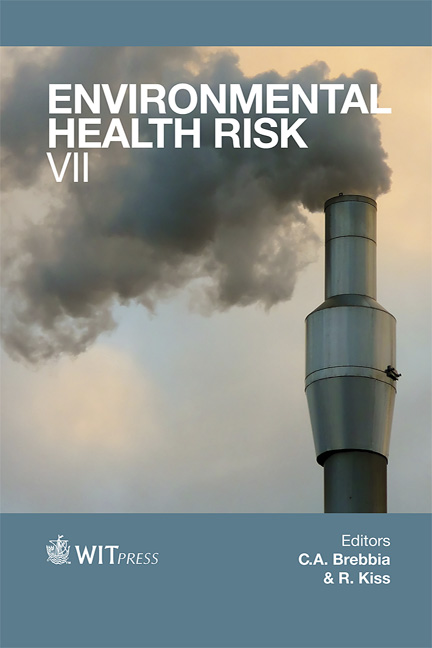Characteristics Of The Particulate Matter In Riyadh City, Saudi Arabia
Price
Free (open access)
Transaction
Volume
16
Pages
11
Page Range
131 - 141
Published
2013
Size
859 kb
Paper DOI
10.2495/EHR130121
Copyright
WIT Press
Author(s)
A. S. Modaihsh and M. O. Mahjoub
Abstract
Increased concern about the impact of the so-called particulate matter on air quality and public health has occurred in recent years. This concern is based on the increased knowledge on the impact the smallest particles have on human health. The primary goal of this study is to carry out a comprehensive characterization of Riyadh bio-aerosol and aerosol samples of PM1, and PM2.5 and provide the scientific background for the further control of air pollution at Riyadh and to develop effective strategies to reduce the ambient concentrations of PM and reduce the deposition of this pollutant to the city. Real time ambient air quality was monitored at Riyadh airport. Mass concentrations of PM2.5 and PM10 (particulate matter smaller than 2.5 and 10 μm in diameter, respectively) for January–April were measured. The concentrations of coarse (PM10), and fine (PM2.5) particulate matter were measured using a Grimm model EDM 365 aerosol spectrometer. Measurement of particulate matter concentrations were obtained at time intervals ranging from 1 s to 60 min. Measurement of particulates was done via laser-light scattering. The counts from each size classification are then converted to mass by a well-established equation. Results indicated that temporal variation observed either for PM10 or PM2.5. was associated mainly with the dust events. There is no significant temporal variation of influential metrological parameters. The ratio between PM10 and PM2.5 were found to be 0.25. Statistical analysis has shown a strong positive correlation between them. Keywords: PM10, PM2.5, dust storms, meteorological data, Saudi Arabia, Riyadh.
Keywords
Keywords: PM10, PM2.5, dust storms, meteorological data, Saudi Arabia, Riyadh.





